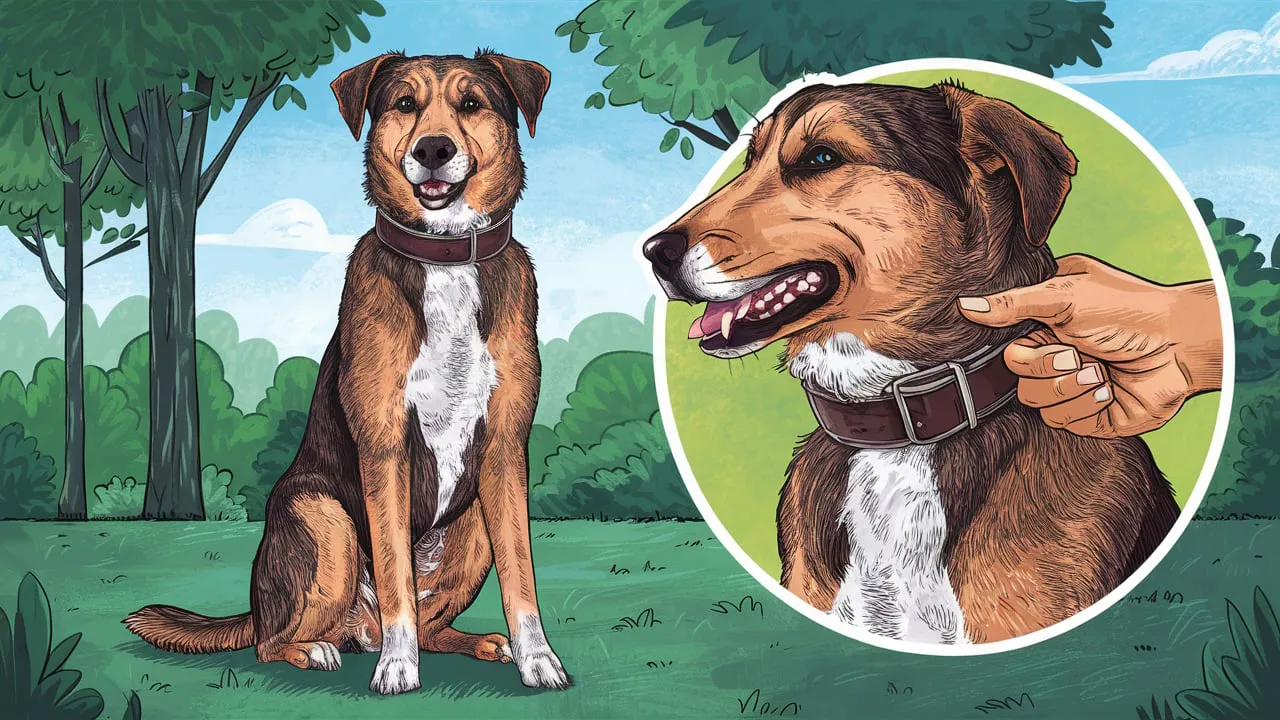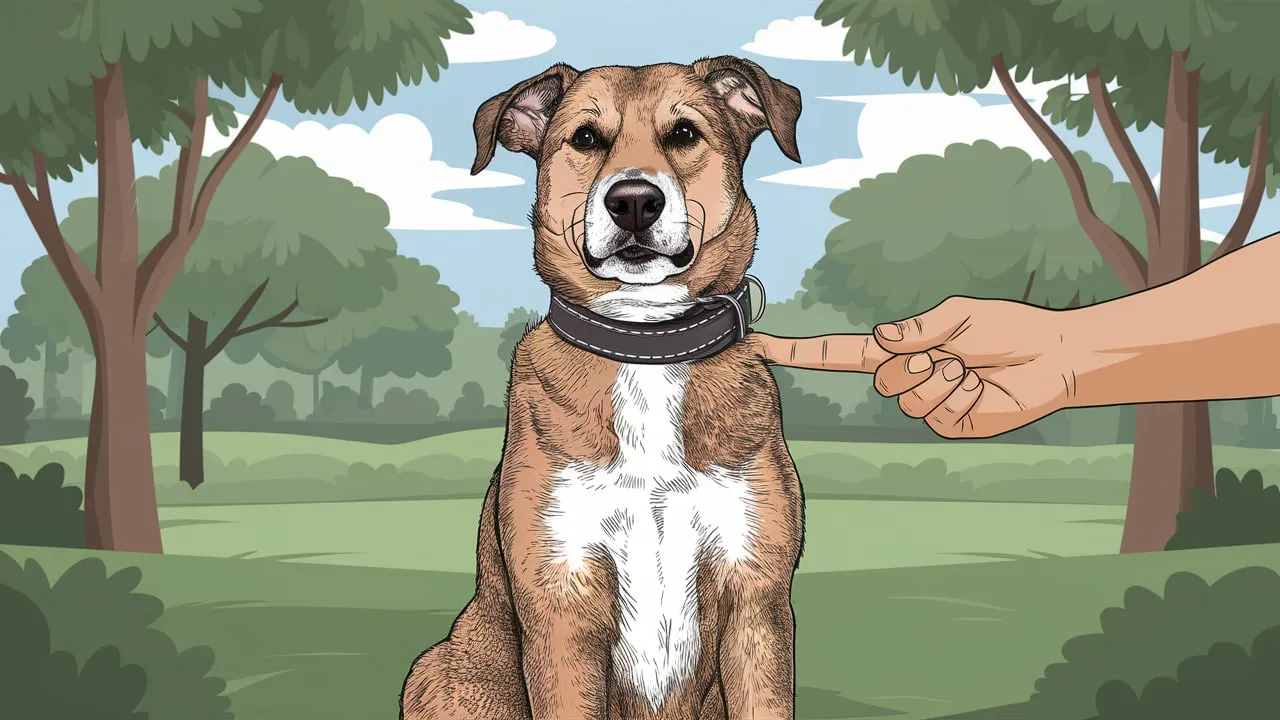Have you ever wondered, “How Tight Should A Dog’s Collar Be?” It’s a question that every responsible dog owner should consider. The fit of your dog’s collar is crucial for their safety, comfort, and overall well-being.
Let’s explore the ins and outs of achieving the perfect collar fit for your furry friend with Dogs Infor.
The Importance of Proper Collar Fit
A properly fitted collar is not just an accessory; it’s a crucial piece of equipment that directly impacts your dog’s safety, comfort, and overall well-being.
Preventing Choking and Injury
- Choking Hazard: A collar that’s too tight can restrict airflow and cause choking, especially if the dog pulls on the leash. This can lead to serious injury or even death.
- Leash Pulling: A tight collar can exacerbate leash pulling, as the dog might instinctively try to pull against the pressure. This can cause strain on their neck, leading to injuries or even spinal problems.
Ensuring Comfort and Freedom of Movement
- Skin Irritation: A collar that’s too tight can rub against the skin, causing irritation, sores, or hair loss.
- Restricted Movement: A tight collar can make it uncomfortable for your dog to play, run, or explore, potentially limiting their natural instincts and exercise.
Reducing Escape Risk
- Loose Fit: A collar that’s too loose can easily slip off, allowing your dog to escape and potentially get lost or injured. This is especially dangerous in busy areas or near traffic.
- Secure Attachment: A properly fitted collar ensures the leash stays securely attached, preventing accidental detachment and potential hazards.
How Tight Should A Dog’s Collar Be? How to Determine the Correct Tightness?
Finding the right tightness for your dog’s collar is crucial for their safety and comfort. Here’s a breakdown of how to achieve the perfect fit:

The Two-Finger Test
This is a simple and effective method to check if the collar is too tight or too loose:
- Place the collar around your dog’s neck.
- Try to fit two fingers comfortably between the collar and your dog’s skin.
- If you can’t fit two fingers, the collar is too tight.
- If the collar is loose and slides easily, it’s too loose.
Collar Adjustment and Flexibility
- Adjustable Collars: Most collars have adjustable buckles or straps. Ensure you can easily adjust the collar to achieve the proper fit.
- Flexible Materials: Choose collars made from flexible materials that allow for some give and movement, preventing excessive pressure on your dog’s neck.
Considering Breed and Size
- Breeds with Short Necks: Dogs with short necks, like Bulldogs or Pugs, may require a special type of collar designed for their unique anatomy.
- Large Breeds: Large breeds often need wider collars to accommodate their size and prevent the collar from digging into their skin.
- Growing Puppies: Puppies grow quickly, so check their collar fit frequently and adjust it as needed.
Signs of a Collar That’s Too Tight
While a snug fit is important, a collar that’s too tight can cause discomfort and even health problems for your dog. Here are some signs to watch out for:
Skin Irritation and Redness
- Rubbing: You might notice your dog rubbing their neck against furniture or the ground, trying to relieve the pressure from the collar.
- Redness: The skin under the collar might become red, irritated, or even develop sores.
- Hair Loss: The hair around the collar might start to thin or fall out due to friction.
Difficulty Breathing
- Choking: A tight collar can restrict airflow and make it difficult for your dog to breathe. You might notice them gasping for air or struggling to catch their breath.
- Panting: Excessive panting, especially when not active, could be a sign of restricted breathing.
Coughing or Gagging
- Coughing: A tight collar can irritate the throat and cause coughing.
- Gagging: Your dog might gag or try to vomit if the collar is pressing on their throat.
Excessive Pulling or Panting
- Pulling: If your dog is constantly pulling on the leash, it could be a sign that the collar is too tight and they’re trying to relieve the pressure.
- Panting: Even when at rest, your dog might pant excessively if the collar is restricting their breathing.

Signs of a Collar That’s Too Loose
While a snug fit is important, a collar that’s too loose can also pose problems for your dog’s safety and your ability to control them. Here are some signs that your dog’s collar might be too loose:
Collar Slipping Off Easily
Firstly, if the collar slides easily around your dog’s neck, even when you try to tighten it, this indicates a loose fit. Additionally, when you pull on the leash, if the collar slides up and down their neck instead of staying securely in place, it’s time to reassess the fit.
Difficulty Controlling the Dog on Leash
Moreover, a loose collar makes it harder to control your dog on leash. For instance, if your dog can easily pull away or slip out of the collar, this can lead to unresponsive behavior during leash commands, as the collar doesn’t provide a secure connection.
Increased Risk of Escape
Furthermore, a loose collar can easily slip off, allowing your dog to escape and potentially get lost or injured. This is especially risky in busy areas, near traffic, or if your dog has a tendency to wander.
Conclusion
So, how tight should a dog’s collar be? Finding the right fit for your dog’s collar is a balance of safety, comfort, and practicality. By following these guidelines, you can ensure your dog’s collar is just right, keeping them safe and happy on all your adventures together.

Related Post
Get Rid Of Dog Tartar: Effective Removal Methods
Dog Crying At Night: Understanding And Solving The Problem
Puppy Teething Age Chart: Stages, Symptoms